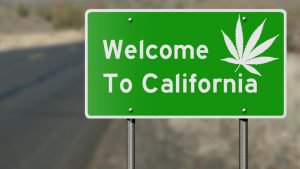Illegal cannabis operators don’t want to go down the legal route in California

As California celebrates its fourth year of legal cannabis, illicit operators continue to thrive. Why? It seems that profit potential is much higher on the illegal end of the spectrum.
Not only this, but sellers can tap into the consumer demographic much more quickly and easily when they sidestep the often tedious process of obtaining licenses.
According to MJBizFactbook, California’s cannabis industry accrued $4.4 billion in sales last year. Despite the high valuation of the nation’s biggest market, many legacy players are deterred by the prospect of poorly executed social equity programs, costly capital requirements and administrative hindrances.
“You’re facing the largest uphill battle to break something up that has been ingrained in this area for almost two or three decades,” said an unlicensed cultivator based in Palmdale, in northern Los Angeles County, during a recent interview with MJBiz Daily reporters. “You can’t beat that monster.”
Consequently, licensed operators have a lot to contend with. The excessive regulatory and compliance costs are making it tricky for law-abiding “cannapreneurs” to generate profit; many are being undercut by black market prices and cheaper underground operating costs.
Illicit cannabis sales are overshadowing legal transactions in California
Cannabis in California has been legal for medicinal use since 1996. Some years later, in 2016, the plant was legalized for recreational purposes.
Despite the long-standing legal market’s success, Global Go Analytics estimates that the illicit market rakes in up to $8 billion in annual sales — almost double that of the legal and regulated market.
There are numerous challenges associated with becoming a legal and licensed cannabis company in California. For example, when California’s legal marketplace was launched by state regulators in January 2018, medical dispensaries were required to obtain both local and state recreational cannabis permits.
The stress of applying for two permit types meant that up to 1,000 dispensary owners chose to either move location, ignore licensing requirements, or shutter their businesses. Consequently, this restricted plant access for cannabis consumers and suppliers.
To make matters worse, numerous cities and municipalities refused to license retail store owners and other types of cannabis businesses. Policy change resulted in the illicit market being bulked up by approximately $500 million in cannabis sales revenue that would have otherwise belonged in the legal sector’s revenue pool.
Social equity application woes pose problem for California’s cannabis industry
The critical importance of social equity in the cannabis industry cannot be ignored. Cannabis prohibition has, undoubtedly, had an adverse effect on people of color. To reverse this problem, numerous legal states and cities introduced social equity programs designed to open a window of opportunity for people who’ve been impacted by the failed war on drugs to partake in the industry.
Unfortunately, the process of applying to become a social equity cannabis business owner in California has been described as ‘flawed’ and ‘unfair’. This is particularly true in L.A., where cannabis entrepreneurs have long been complaining about the slow rollout of its social equity program, which is negatively impacting many of the people it was meant to help.
Many applicants have either been turned down or left waiting for long periods of time to have their applications reviewed. The wait has also forced applicants to pay rent on their empty storefronts for years.
Expense of launching a legal cannabis business in California is off-putting
The disparities between launching a legal cannabis business in California and operating an illegal business are heavily focused on the subject of startup costs. High licensing, capital and operational costs have made it a challenge for licensed businesses to make profit.
Equipment, electricity, labor and rent can set back legal growers between $1,500 and $2,000. What’s more, the licensing process can cost around $1 million, whereas illegal growers choose to remain unlicensed and pay nothing.
Money aside, the time frame during which an illegal grow site can be launched is often much shorter than that of a legal grow site. Typically, illicit cultivation facilities sized at 1,000- to 2,000-square-feet can be finalized within just a few weeks. Conversely, legal grow sites usually take more than two years to get started
Consultants can be hired by illegal grow operators in California
Underground cultivators in California are capitalizing on a gap in the market that enables them to assist illegal growers in setting up their operations for a fee. These people tend to work as part-time consultants. The role involves providing lighting setups, cannabis strain recipes and nutrient combinations.
In most cases, clients will pay up to a third of the overall crop value for help from part-time consultants; the street value of one pound of cannabis ranges from $1,800 to $6,000 and most indoor harvests yield 6-12 pounds.
Looking to the future, the only way that the legal market will manage to compete with the black market is if black market dealers are given free, legal licenses. Until those licenses are made available, California’s black market will likely keep growing.







